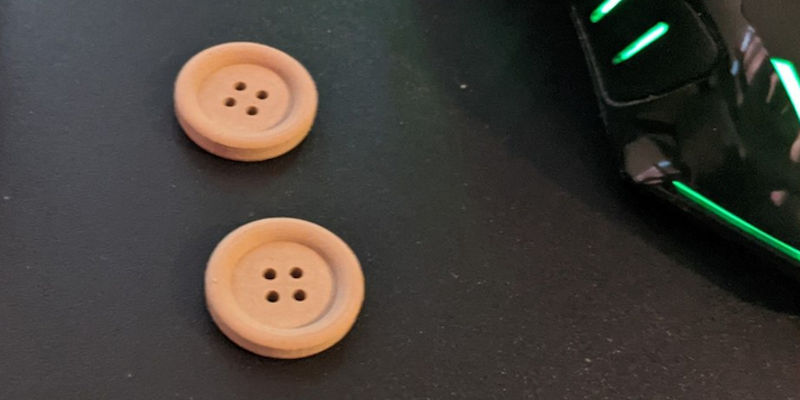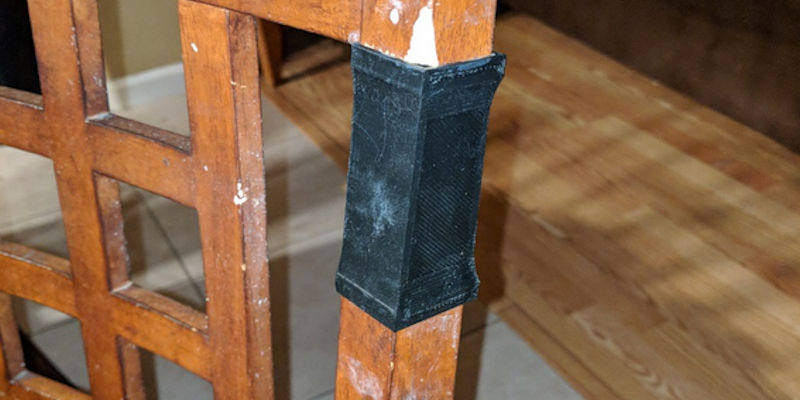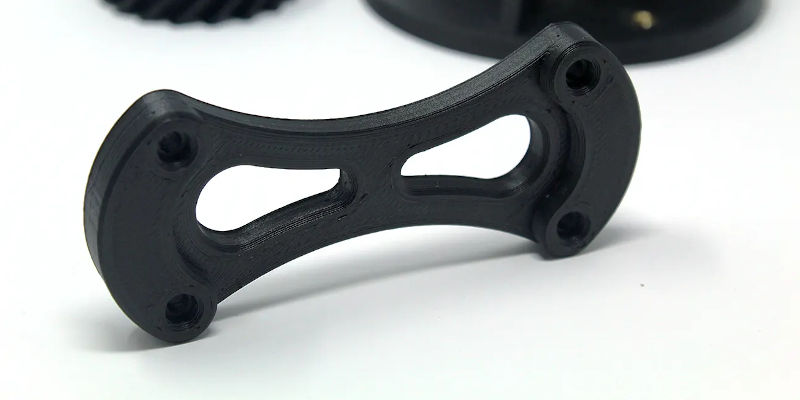
3D Printing for Repairs – Fix Your Stuff With Your 3D Printer!


At 3DSourced we’ve covered everything 3D printing and 3D since 2017. Our team has interviewed the most innovative 3D printing experts, tested and reviewed more than 20 of the most popular 3D printers and 3D scanners to give our honest recommendations, and written more than 500 3D printing guides over the last 5 years.
Home is where the heart is, which is why we take great pride in it. Our houses and apartments are special places to us, but they still need upkeep from time to time.
Whether it’s something that’s fallen into disrepair or just a little piece of your home that you think could use improvement, there’s nothing quite as satisfying as fixing it yourself.
Using 3D printing to repair stuff is a great way to use your printer to help with the upkeep around the house. Printing out practical use or placeholder parts is a great way to save money and time, and is a pretty cool way to stay on top of your necessary DIY projects.
Why Use 3D Printing for Repairs?
While it may be tempting to drive to the store and grab whatever parts you need, it always feels like a chore.
You have to get the right pieces in the right sizes, spend way too much time trying to see if something you only need one of comes in a pack of less than twelve, and then there’s the cost of it all.

Fixing things with 3D printing means you can guarantee the correct size and quantity of what you need before you even hit print, and it’s completely free beyond the cost of materials (and files if you go the premium route.)
It beats going to the store, it’s much cheaper, and you can brag about having taken care of everything yourself from scratch. A good friend of mine recently bought a fixer-upper, and he’s been turning to his 3D printer to take care of repairs and improvements for his home.

Even if you find a file for a part you need that’s not the right size, you can simply edit it in your preferred CAD software to make it whatever shape and size you need.
Now let’s take a look at some of the best examples of using 3D printing for home repair and renovation.
Closet Repairs
Closets get daily use as we open and close them every day to pick out our outfits and hang or dry laundry. This means closet doors are often the first thing to break in any home. My last apartment had a sliding door closet that broke within a week of me moving in, so I can tell you a broken knob is no picnic in that department!
I’m far from the only one to have this issue, which is why it was easy to find these very simple and cost-effective parts for closet door repair!

I chose this example as the starter because it perfectly outlines one of the major benefits of 3D printing things yourself for home repair and maintenance. The designer admits to the repairs costing upwards of $60, so printing their own was absolutely the right way to go for them and you!
Robot Wall Socket Cover
Have you had that feeling of actually being glad that something broke because you know it’s an opportunity to make it better? That’s what the designer behind this robot wall socket cover must have felt when they designed it!

It’s cute, it’s fun, and if you’re artsy enough you can make any kind of design you want! If you’d rather keep your home traditional, you can just keep the measurements and edit out the robot’s head.
With different color filaments, you can even color-code your sockets for different things or try a glow-in-the-dark filament so you can charge your phone at night with ease.
Steam Cleaner Accessories
Steam cleaners are great things, but like vacuums, they are quite large and can get in the way. If you, like me, have little by way of storage space, then you’ll want to check out this quick and easy steam cleaner wall support 3D print for your home.

Never again will you need to carefully step over your steam cleaner or lodge it behind something only to have to fish it out when you next need it. While not strictly home repair, it’s a great little touch to help keep your home neat and your appliances organized.

While you’re at it, why not print this neat steam cleaner caddy? It makes mobility and boiler access so much easier with its clever and practical design. Equally handy is this steam cleaner attachment organizer to keep you on top of your cleaning needs.
Should your steam cleaner also fall into a state of disrepair, you’ll want to keep these 3D printed steam cleaner replacement parts handy so you can replace any broken pieces in a moment’s notice.
Clothing Repair
Keeping our clothes in good shape is another aspect of home maintenance that I must admit I overlook a little too often.
As I sit here with a safety pin holding part of my favorite shirt together, I’m considering for the first time the importance of sewing kits. As to why I’ve got a missing button, let’s just say I’ve recently acquired a cat.

This very simple 3D printed button would be one such lifesaver, which pairs very well with these 3D printed thread spool carousels.

And I can’t talk bout 3D printing things for your sewing kit without mentioning this easy needle holder to keep track of the small nuisances.
Speaking of clothes, laundry is a very important and never-ending part of life. If you’re lucky enough to live in a warm climate and have access to a garden, then you probably use clothes pegs to hang up your wet clothes on those nice sunny days.

The problem with clothes pegs, however, is just how fragile they can be. Sure you can keep a basket full of hundreds more of the little things that you could possibly need, but sometimes even that isn’t enough.
If you find that your clothes pegs go missing and break without you even really knowing how or why, then keeping these files for a 3D printed clothes peg replacement handy will be very useful to you in the future!
Quick Fixes
Not all repairs or home maintenance need to take time and energy, sometimes the solution to a problem is as simple as printing out and gluing on. This broom tip is one such example, and eliminates the need to buy a replacement broom or risk hurting yourself on a broken end.
Wire Repair
Wires wear away just like anything else. I can’t tell you what number phone charger I’m using now, as most of mine were damaged in transit, warped through heat, or were chewed by pets and/or pests.

Often enough, a split cable is nothing to worry about, and can still function perfectly well. But to save yourself the frankly extortionate cost of a new one, why not hide those exposed wires with these wire repair fixes? While designed for Apple products, they can be tweaked to fit any cable you like.
If your wires are a little more problematic, then you should check out this repair kit instead for help keeping that charger going for even longer.
Headphone Brace
Another bothersome appliance that I simply cannot seem to keep in good shape is headphones. Don’t ask me why, but they always disintegrate within a year of purchase. That’s why I’m bookmarking this headband repair brace for when the ones I’m wearing now inevitably decide to break.

Chair Repair Part
Considering how often they’re used, it’s amazing that most chairs last as long as they do. But sooner or later the wood will get weaker and the weight will take its toll. Chair backs and legs can be temporarily fixed with this chair repair part to keep the structure aligned and even usable until you can work out a more permanent solution.

Tips and Tricks
Repairing things around the house yourself is a satisfying and worthwhile endeavor for many reasons, but such satisfaction is doubled when you use parts you’ve made yourself.
That being said, repairs and maintenance are two things you don’t want to rush or do idly, as it can be dangerous if you don’t know what you’re doing. While things like the broom handle are relatively harmless, there are some things you should keep in mind.
Always Measure
Repair and maintenance always involve needing accurately sized parts to fit what you’re repairing. Without accurately measuring and doubling checking the size of the part you need, you’ll end up wasting materials and time making something you can’t use.

For parts like the chair repair, this can get dangerous, as it could render the furniture unfit for use.
Double Check Your Filaments
Filaments age and deteriorate like any other materials. If your filaments have absorbed too much moisture or been in the sun too long, you’ll find them more brittle than they should be. Relying on damaged filament for home repair could end up causing more damage if you’re not careful!
Test First!
Before using a 3D printed part for repairs, it’s a good idea to do a test run. Print out the basic model and then use it as planned. Note if it works and where it should be tweaked and change your design accordingly.

It may sound obvious, but there’s nothing worse than a ‘that’ll do’ approach when it comes to taking care of your home and belongings!
Related articles:




















